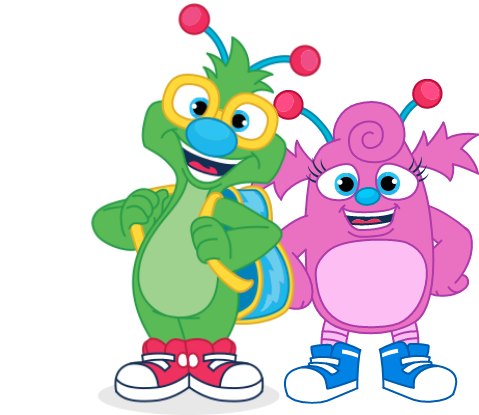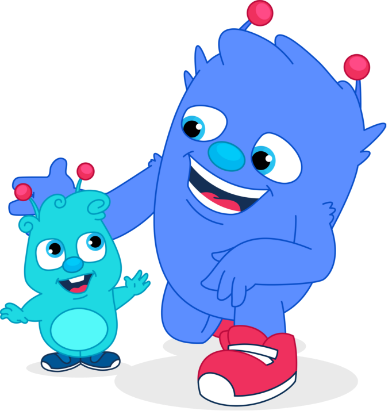July 25, 2018
The mess… is where the magic happens.
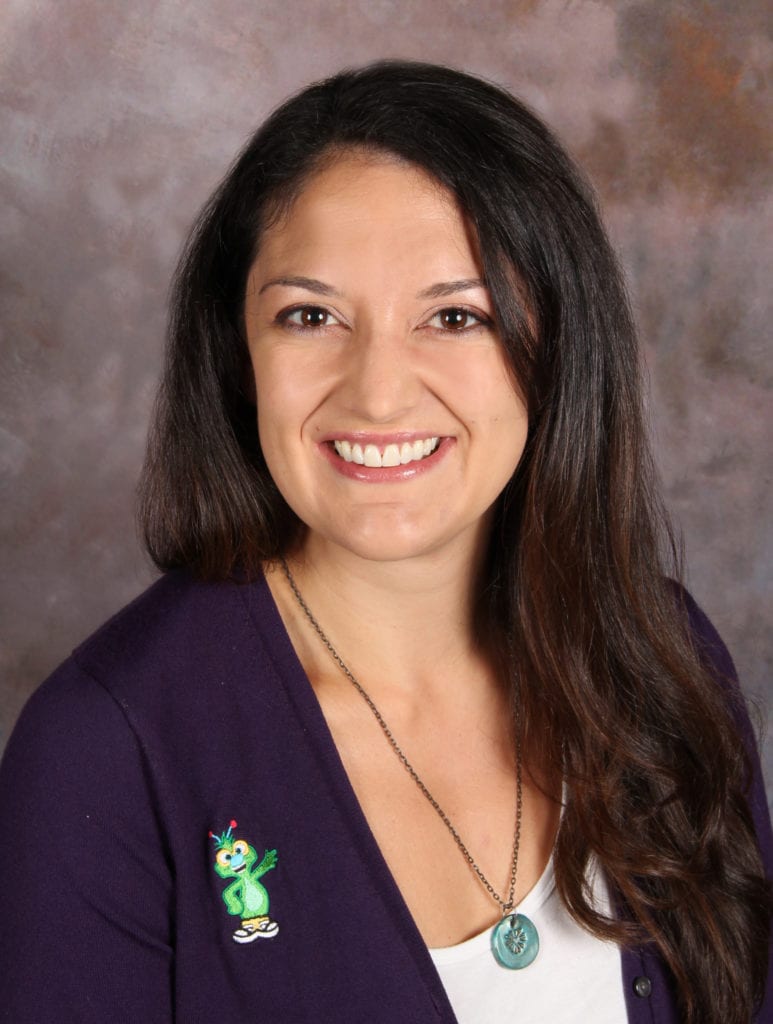
Contributed by Jennifer Horner, Director of Education Development
With each easel paint drip to the floor, each sensory bin splatter, every rice table spill, and every toy bin tumble, most adults experience a sense of anxiousness. Most of us in the moment are already creating our task list for clean-up. Meanwhile, the child’s experience has only barely begun.
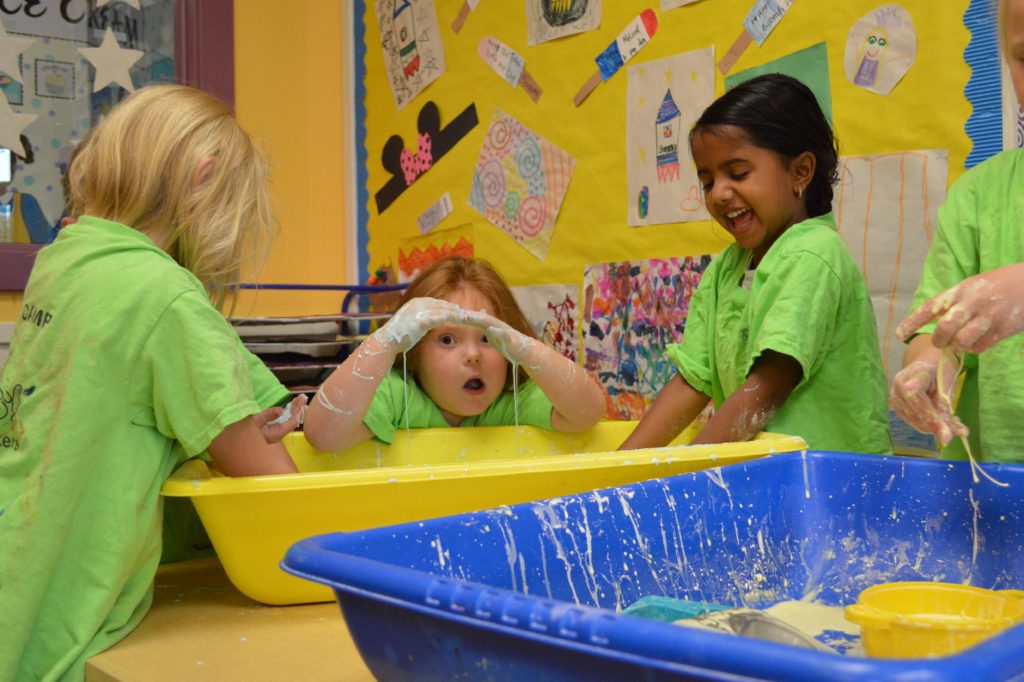
It’s natural to fixate on the mess, but for a moment, redirect your gaze in a different direction. Picture an early childhood classroom buzzing with hands-on exploration, questioning, meaningful conversations, and exciting individual discoveries. Children’s faces are lighting up, they’re motivated to use expressive language, and they’re building confidence– not to mention a million neural connections per second!
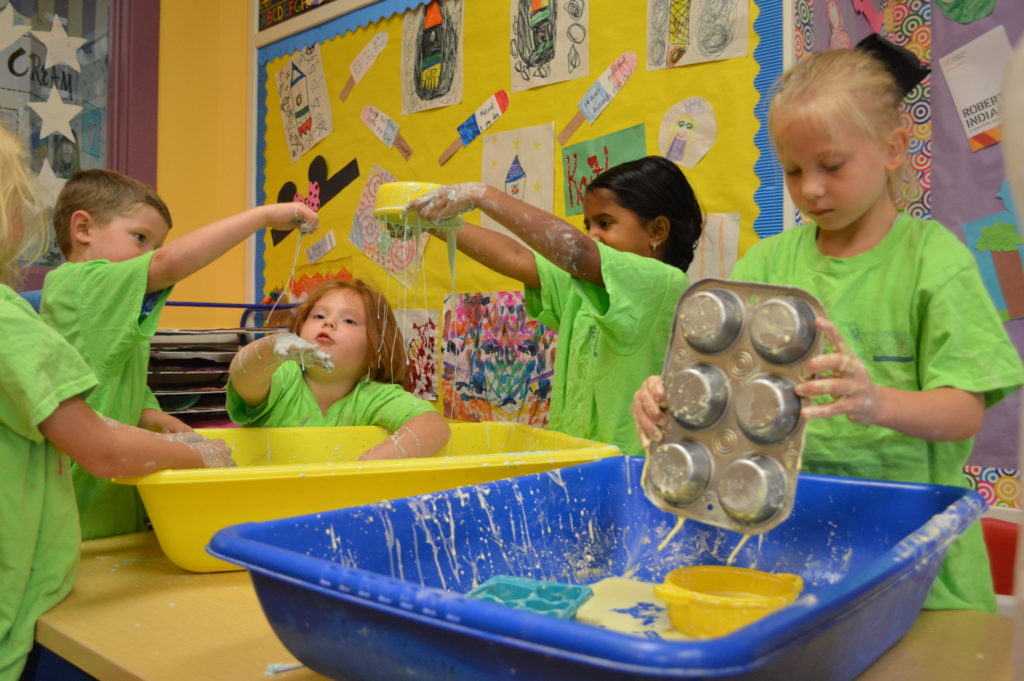

Young children discover their world the only way they know how – by chasing their curiosity. In doing so they can’t help but need to feel the Jell-O squish through their fingers, or discover what happens when they fling their plate on the floor as an infant. Toddlers have to know what happens when they turn a basket of toys upside down and cannot resist the urge to pat and swipe at a puddle of water on a table. This is the most natural, genuine, and developmentally appropriate way to be a young child. They won’t experiment forever, but with each developmental milestone they have an innate need to find out.
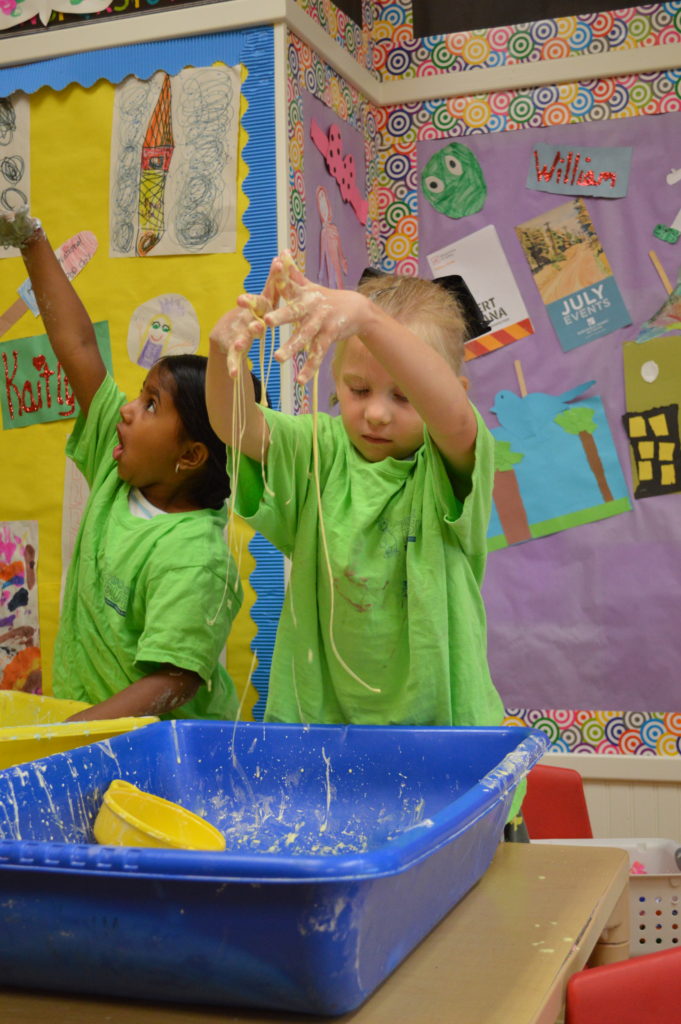
Research tells us that children have to experience learning with their whole body. Yes, hands are often covered in goop, paint smudges appear on faces, dirt embeds itself in knees and palms, and tiny sneakers go home with play dough filled tread on occasion. Although messy, children are going home with invaluable experiences that are building and strengthening their brains, encouraging their curiosity and initiative, exercising their problem solving skills, and nurturing their resiliency.
At Doodle Bugs!, we’re honored to embrace the mess with children. In addition to offering children sensory-based play experiences on a daily basis, we enjoy celebrating messy play. In fact, this week our centers are enjoying “Slimeapalooza,” a week dedicated to squishy, squashy, gooey, slimy fun.
Check out some of our favorite activities, recipes, and materials below:
Sprinkler Experiments
Invite children to use foil pieces to place over the sprinkler holes while it is ‘off.’ Turn it on and watch how they fly! Children can experiment with molding their pieces in different ways to see how it flies differently. Encourage reflection afterwards by inviting children to document their findings through drawings or storytelling. You can also incorporate technology and record with a tablet.
Slime Exchange
Our centers have a constant supply of goop making ingredients such as flour, cornstarch, baking soda, cornmeal, salt, vegetable oil, shampoo, food coloring, paint, glue, and borax (raw ingredient handled by teachers only for ages 3+). This week, campers were invited to create their own slime concoctions – making decisions about ingredients, preparation, and predicting outcomes!
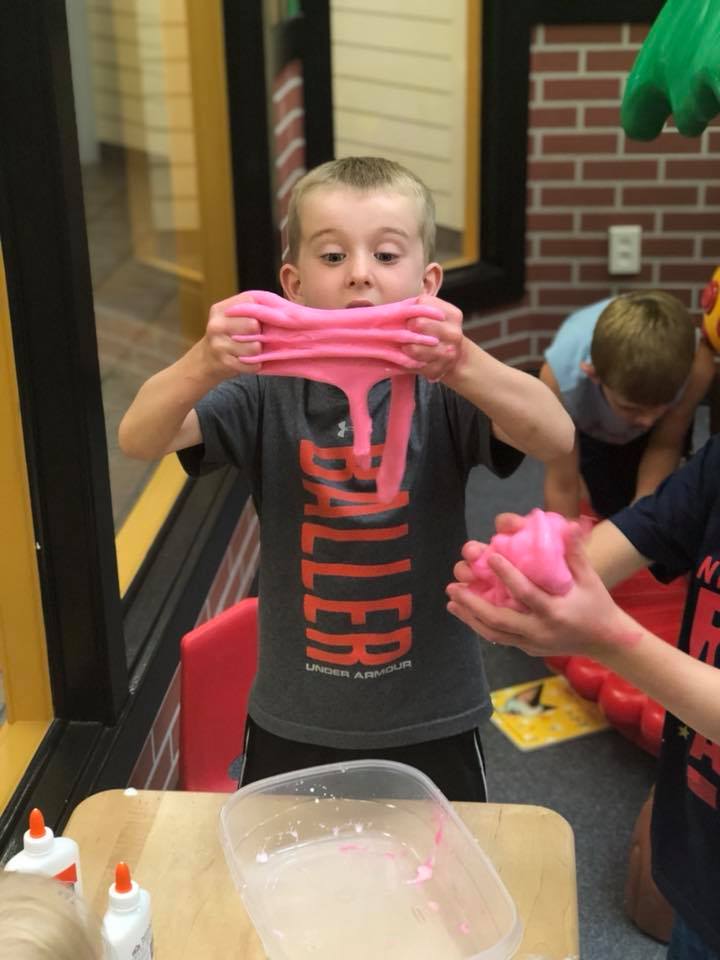
Soap Slime
Soap flakes or grated bar soap, a pitcher of water, and a sensory bin are all you need for soapy sudsy experimentation. The dissolving, mixing, changing qualities captivate interest and the independence of determining one’s own proportions is exhilarating!
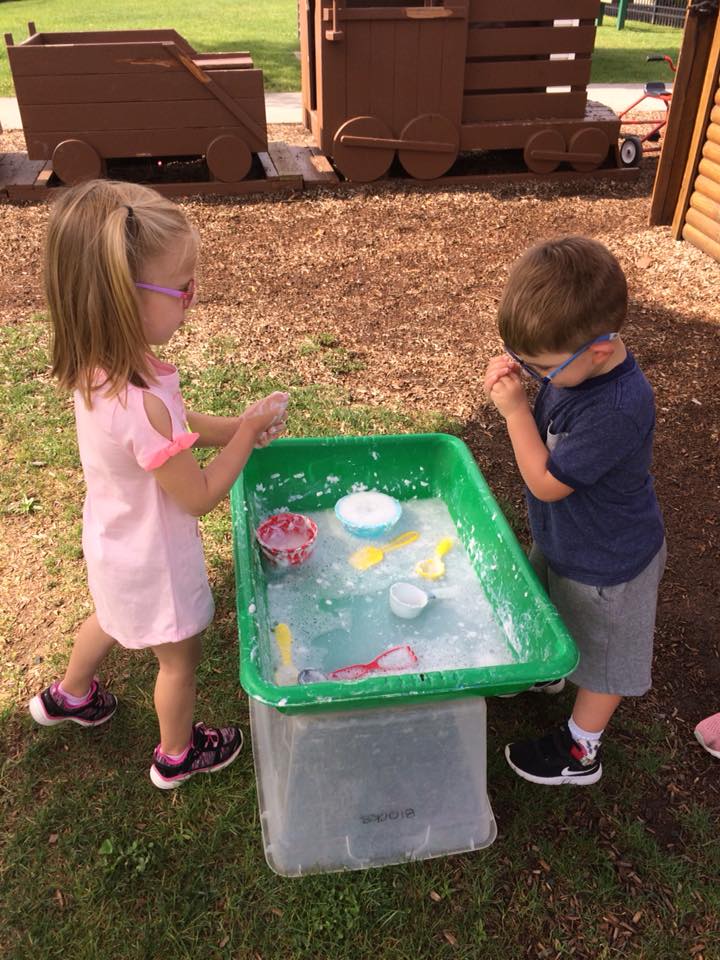
Sloppy Slimy Sequin Picking
Whip up a batch of oobleck (1 part cornstarch, 1 part water, food coloring). Add sequins, pony beads, and other objects that can be picked out and put in a bucket! Challenge children to pick out as many pieces as they can! Extend into a race!
*Adding small items is only recommended for 3+. For younger children, stick to the original recipe (cornstarch and water).
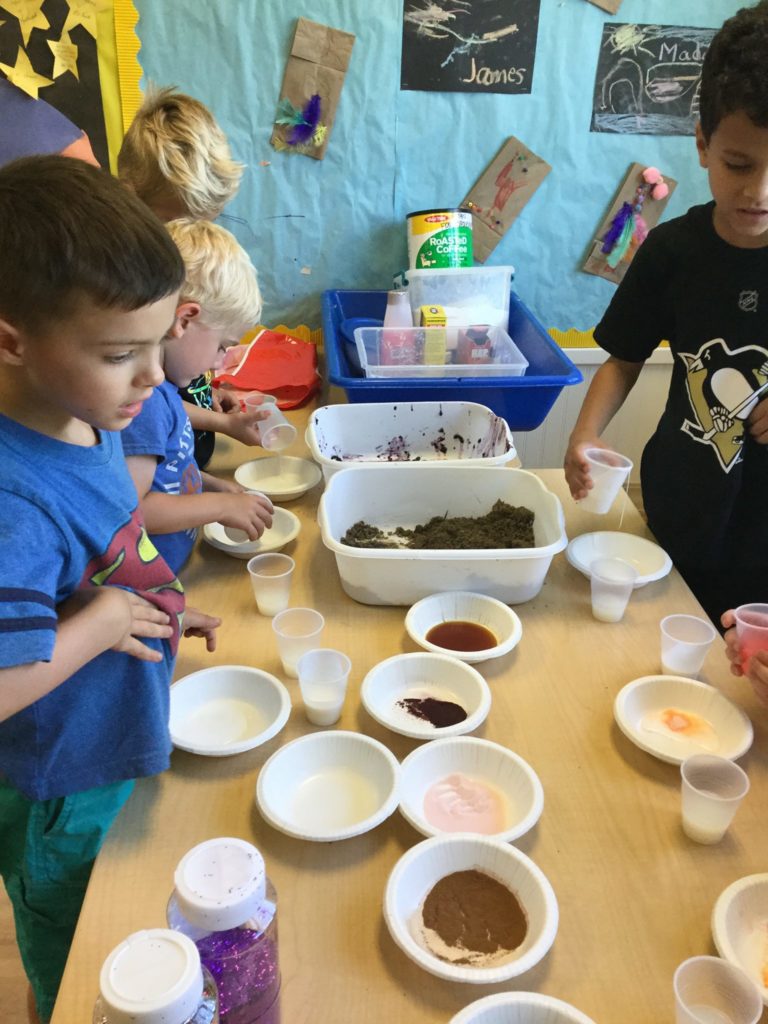
Gooey Literacy
Resealable baggies, and gooey substance of your choice (Jell-O, pudding, and hair gel work well) encourage fine motor skills and literacy development. Children love to push the substance around inside the baggie while you can encourage their fingers to draw letters, numbers, or shapes.
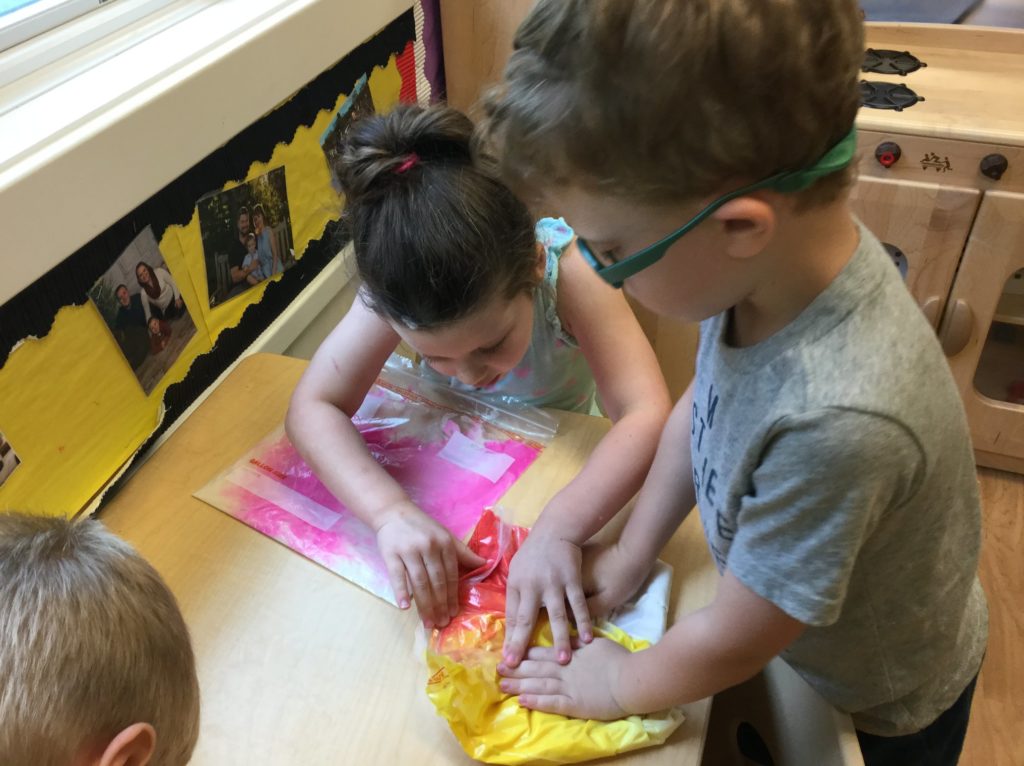
Slimey Stationary
Using index cards, poster board pieces, or upcycled cardboard, invite children to brush on colorful slime or sweet smelling Jell-O. Shake excess and let dry to create a fun background for a letter, postcard, or recipe card.
The process of teaching children about the expectations for the use of the materials and how to take care of oneself and the classroom after a healthy, messy, learning experience is ongoing and amazingly rewarding. This takes skill, becomes more refined with experience, and develops over time. It is vital to have a predictable schedule in place along with nurturing, trusting relationships with each child. Messy play can and should be incrementally introduced, with the end-goal of giving every child ample opportunity to engage in messy play on a daily basis.

 1.866.668.5111
1.866.668.5111  6:30 am - 6:00 pm
6:30 am - 6:00 pm 
 Give a Happy High Five!
Give a Happy High Five!

